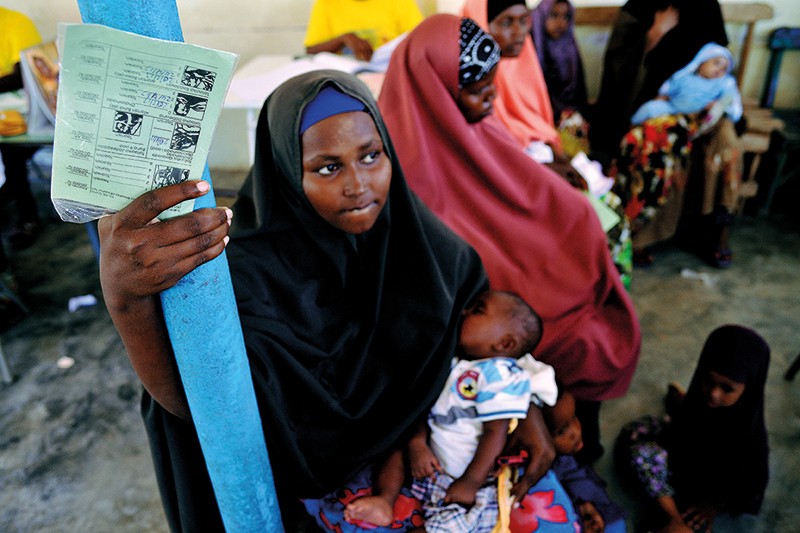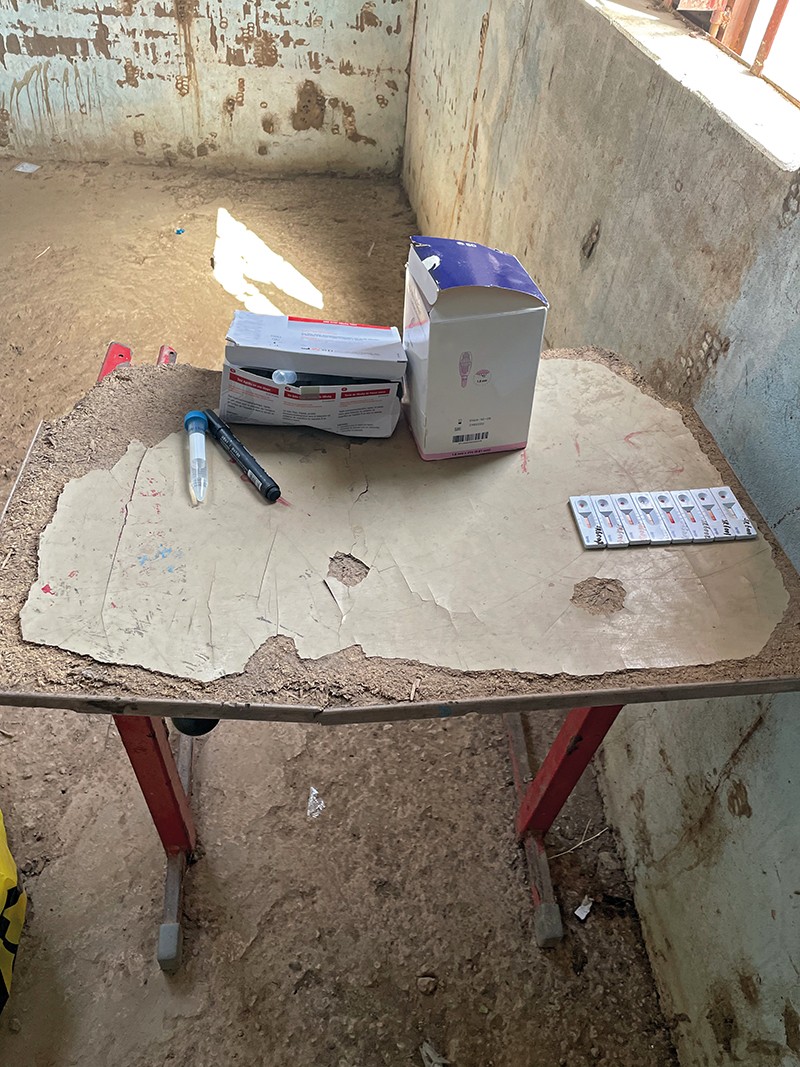Liver cancer is common in West Africa. But knowledge about hepatitis B — the viral illness estimated to cause 80% of primary liver cancers globally — is rare. In Senegal, most families have a member who has died from liver cancer, says Noemi Tousignant, a historian of science and health at University College London who has studied West Africa since 2005. “Most families have some uncle, or a cousin affected. It’s very close to people’s lives,” says Tousignant. Yet hardly anyone speaks about hepatitis B in that country.
This neglect became apparent to Tousignant when, in 2019, she spent a month interviewing Senegalese nurses, midwives and other health workers about liver cancer. She found hepatitis B to be “largely invisible” in health data, care practices and public messaging. And the number of people living with chronic hepatitis B outnumbered those receiving treatment for the condition by around 10,000 to 1.
Senegal is not unique in its neglect of hepatitis B care. Only 2% of Africans living with chronic hepatitis B infection receive a diagnosis, the World Health Organization (WHO) says, and a mere 0.1% receive treatment. By comparison, in Europe and the Americas, the corresponding figures are 18–19% and 2–3%. The continent also lags behind the rest of the world in preventing hepatitis B through vaccination. Only about 11% of newborn babies receive the birth-dose vaccines that prevent mother-to-child transmission of the virus — alongside maternal screening, the quickest way to reduce prevalence in a population.
This means that most of Africa will struggle to meet WHO member states’ targets of reducing hepatitis B deaths by 65%, cutting new infections by 90%, and treating 80% of eligible people with the infection by the year 2030. In fact, low- and middle-income countries could even see more people dying of viral hepatitis by that year because of the countries’ ageing populations and lack of testing.
Part of the problem is the disease’s low profile in Africa, especially compared with other infections. “Hepatitis B virus has always been eclipsed by the blockbusters causing AIDS, malaria and TB — and now, of course, by COVID-19,” says Anna Kramvis, who studies hepatitis virus diversity at the University of the Witwatersrand in Johannesburg, South Africa. Variants of hepatitis B that commonly circulate in Africa are rarely found outside the continent. This can make diagnostic tests and biomarkers used to track disease progression less accurate, because they were developed outside Africa and target other variants. According to Kramvis, Africa’s lack of basic hepatitis B virus surveillance, limited access to laboratories and political inaction make addressing this issue tricky.
Hepatitis B is also a complex disease to diagnose and treat. Identifying carriers requires a blood test for hepatitis B surface antigen. And because not all carriers will develop symptoms, treatment is usually reserved for those at increased risk of developing severe disease such as cirrhosis or cancer. But that requires further tests, which must be repeated regularly — a challenge in many parts of Africa.
However, research shows that, when adequately funded and tailored to local needs, hepatitis B screening and treatment programmes can work even in limited health-care systems. A study by scientists in the United Kingdom, Gambia and Senegal, run between 2011 and 2014, was able to enrol around 2,000 people with hepatitis B in the two African countries, and gave those requiring treatment antiviral drugs. But there were barriers. More simple, point-of-care tools to assess who needs treatment, such as finger-prick tests, could be game-changers, says Maud Lemoine, a hepatologist at Imperial College London who leads the Prevention of Liver Fibrosis and Cancer in Africa (Prolifica) programme, which carried out the study.
Africa needs better treatment policies, Lemoine says. Current guidelines advise that all hepatitis B carriers should be tested for disease progression every six months. But in Africa, this is feasible only in urban, middle-class communities. “Treatment guidelines will have to be adjusted and differentiated within the same country,” she says. Prolifica is trying to identify local risk factors for disease progression by studying around 1,500 carriers of hepatitis B over a longer period. This would allow people at low risk to be discharged from the health system, or monitored less frequently, freeing up resources for those at high risk.
For such action to reach the people who need it, however, the widespread ignorance surrounding hepatitis B must be tackled head-on. In a study in rural Senegal published in 2020, only one-third of people asked said they had heard of hepatitis B (S. Boye et al. Am. J. Trop. Med. Hyg. 102, 637–643; 2020). And when she visited health facilities in the country, Tousignant saw no posters or pamphlets about the disease, even in blood-donation facilities, one of the few places where carriers of the virus might receive a diagnosis.
A problem of recognition
Table of Contents
Although underfunding is a major reason for the neglect of hepatitis B treatment in Africa, it’s not the only one. Even South Africa, which boasts one of Africa’s best-resourced healthcare systems, struggles to deal with the disease. The country does not routinely screen pregnant women for the infection, nor does it offer vaccinations at birth. The prevalence of hepatitis B is estimated to be 4–6% of the population, but the exact figure is unknown. And most infections occur in early childhood.
“Hep B is an unrecognized problem in South Africa,” says Wendy Spearman, a hepatologist at the University of Cape Town. In December 2019, South Africa published new guidelines for viral hepatitis management. These aimed to ramp up the country’s screening, prevention and treatment of hepatitis B, including maternal screening. But no sooner had the recommendations been made than COVID-19 arrived, pushing hepatitis B (and many other health priorities) to the sidelines, where it remains. “The timing really was unfortunate,” says Spearman.
The pandemic has hampered hepatitis B programmes on a global scale. Diagnosis and treatment services for hepatitis B and C were disrupted in 43% of countries surveyed by the WHO one year into the pandemic. Gavi, a global public–private alliance that funds vaccination programmes in low-income countries, had looked into including hepatitis B birth-dose vaccines in 2018 under the range of jabs it supports. This might make a big difference: a Gavi-supported programme introducing universal birth-dose vaccines in China reduced the prevalence of hepatitis B among children under 5 from almost 10% in 1992 to less than 1% in 2013. But the pandemic has delayed this inclusion, says Olufunmilayo Lesi, viral hepatitis lead of the WHO’s global HIV, hepatitis and sexually transmitted infections programmes. Instead, she says, Gavi is prioritizing disrupted childhood vaccinations — which exclude birth-dose hepatitis B — and COVID-19 vaccines.
However, although the pandemic has bled resources from all health-care areas, it has created opportunities for hepatitis B control efforts, says Daryl Lau, a gastroenterologist at Beth Israel Deaconess Medical Center in Boston, Massachusetts. Lau, who until last December led an international working group on hepatitis B management in resource-limited settings, says COVID-19 has shown that rapid scale-up of molecular testing and awareness about infection control can be achieved.
“What COVID-19 has taught us is that, once the resources are there, things can develop very quickly,” she says. “Next year, if the COVID-19 situation is under better control, then the platforms established for it could be redirected to other diseases.”
The working group previously run by Lau — a subcommittee of the International Coalition to Eliminate HBV — is conducting a survey into how access to treatment varies between low-resource settings. The survey, which is expected to report its findings next month, aims to obtain an overview of gaps in hepatitis B care by polling people from a variety of backgrounds who are involved in care. “It will be a document that people can show to policymakers and say, this is what’s necessary to have a successful hepatitis B diagnostic and treatment programme,” Lau says.
The Egyptian example
One African success story is Egypt. Despite having more hepatitis C than B infections — the reverse of the situation in sub-Saharan Africa — its resource challenges mirror some of those farther south.
Egypt launched an ambitious programme to control viral hepatitis in 2006. It focused on hepatitis C, which affected at least 10% of the country’s population at the time. Since then, state-funded diagnosis and treatment programmes have been set up, and in 2016, Egypt introduced hepatitis B vaccinations at birth for all babies — making it an outlier in Africa.
Like other African countries, Egypt struggles to identify everyone who needs treatment. And, unlike its hepatitis C screening, which is universal, that for hepatitis B covers only pregnant women and the five million people being treated for hepatitis C. “So we’re still missing some hepatitis B cases,” says Manal El-Sayed, a paediatric haematologist and oncologist at Ain Shams University in Cairo and a member of Egypt’s national committee for viral-hepatitis control. She says Egypt can teach the continent valuable lessons, especially when it comes to raising awareness of viral hepatitis and the diseases it can cause.
El-Sayed says that an effective awareness campaign included giving hepatitis B vaccinations to university students studying medicine, dentistry and nursing — careers in which needle-stick injuries might be associated with increased risk of contracting the disease. The vaccinations were offered free to this group, and at a discounted rate to all other students. More than 100,000 students were vaccinated in that drive, El-Sayed says. And they, in turn, went out into their communities, advocated for vaccinations and spoke about hepatitis B, creating a multiplier effect. “I think that helped a lot,” she says. “It was really very energizing.”
Tousignant thinks the hepatitis B community could learn a lot from HIV, advocacy for which has gone hand in hand with advances in public health and patient outcomes. But she warns that there will probably be no “easy fixes”. Simply improving screening won’t help until affordable drugs are scaled up and ways found to cost-effectively decide who should receive treatment. “It’s a structural and systematic problem,” she says, and to solve it, “you have to think systematically.”


